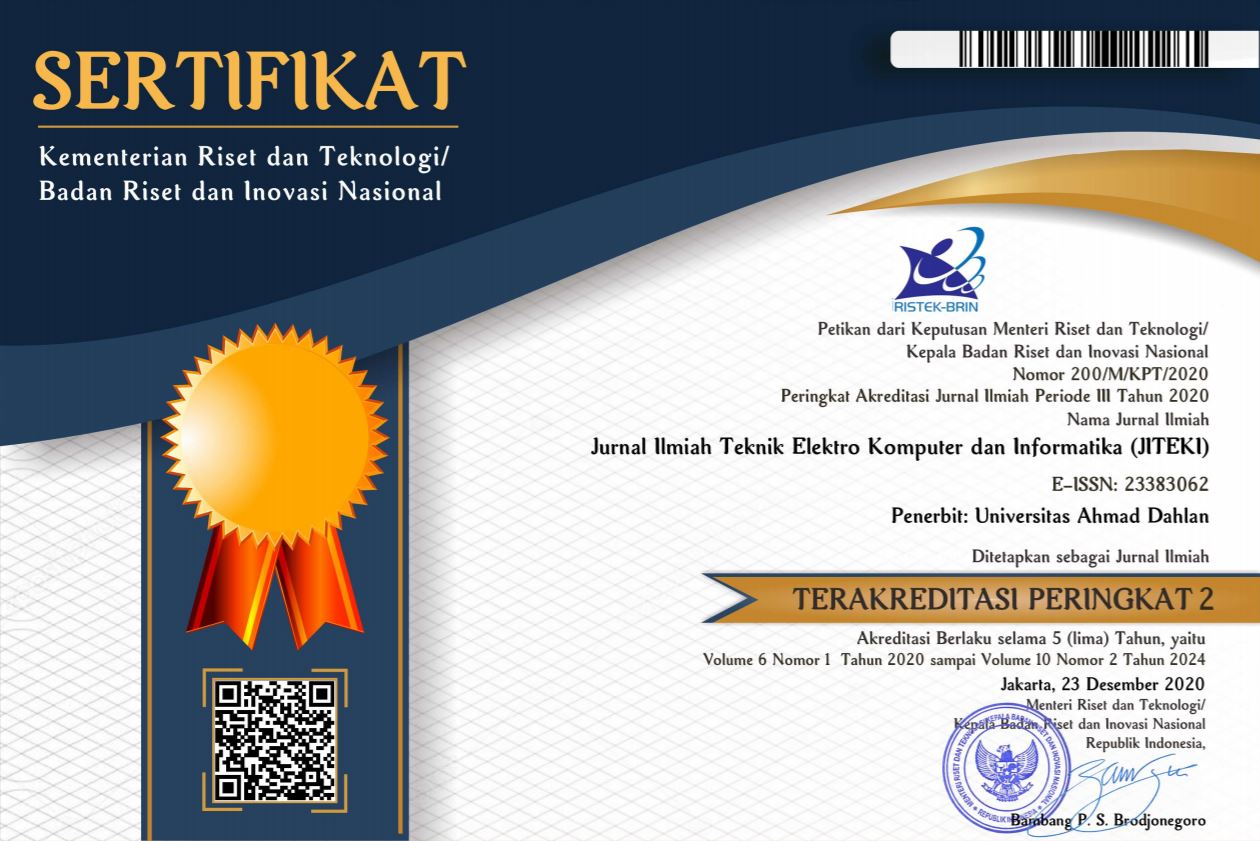Throughput and Coverage Evaluation on The Use of Existing Cellular Towers for 5G Network in Surakarta City
Abstract
Currently, telecommunication operators must deploy 5G networks to cope with the exponential growth in internet-access demand. To minimize capital expenditure, existing 4G cell towers are being used to install new 5G base stations (gNodeB). However, 5G has different key performance indicators (KPI), frequency and bandwidth values, and propagation models compared to 4G hence an evaluation of this approach’s effectiveness is needed. This paper analyzes 5G network performance with frequency of 3.5 GHz, bandwidth of 100 MHz, and using existing cellular towers in Surakarta City. The city has a total area of 46.8 km2, mostly flat topography and not many tall buildings therefore propagation models with line-of-sight urban macro (UMa) and urban micro (UMi) are representative. KPI parameters for throughput include 75% of the area served with at least 100 Mbps for downlink and at least 50 Mbps for uplink. KPI parameter for signal strength targets at least 90% of the area covered with -100 dBm or higher. Our Atoll simulations show that the optimistic scenario (UMa) produces average throughput of 153.59 Mbps (downlink) and 117.88 Mbps (uplink), 89.43% served with at least 100 Mbps (downlink) and 100% experience at least 50 Mbps (uplink), average signal strength is -83.99 dBm and 79.71% area covered with at least -100 dBm. The pessimistic scenario (UMi) predicts throughput of 141.32 Mbps (downlink) and 117.88 Mbps (uplink), 86.52% provided with at 100 Mbps (downlink) and 100% served with 50 Mbps (uplink), average signal strength of -90.73 dBm and 75.13% area covered with at least -100 dBm. It can be concluded that the 5G network installed at existing 4G towers can conform to KPI parameters on throughput but still experience drawbacks in signal coverage. A non-Standalone 5G network is suitable for early deployment, but gNodeB installation at new locations is needed in the following years.
Keywords
Full Text:
PDFDOI: http://dx.doi.org/10.26555/jiteki.v10i1.27719
Refbacks
- There are currently no refbacks.
Copyright (c) 2023 Muhammad Afif Affandi, Muhammad Afif Affandi, Muhammad Afif Affandi, Muhammad Afif Affandi, Muhammad Afif Affandi, Muhammad Afif Affandi, Muhammad Afif Affandi, Munawar Agus Riyadi, Munawar Agus Riyadi, Munawar Agus Riyadi, Munawar Agus Riyadi, Munawar Agus Riyadi, Munawar Agus Riyadi, Munawar Agus Riyadi, Teguh Prakoso

This work is licensed under a Creative Commons Attribution-ShareAlike 4.0 International License.
| About the Journal | Journal Policies | Author | Information |
Organized by Electrical Engineering Department - Universitas Ahmad Dahlan
Published by Universitas Ahmad Dahlan
Website: http://journal.uad.ac.id/index.php/jiteki
Email 1: jiteki@ee.uad.ac.id



